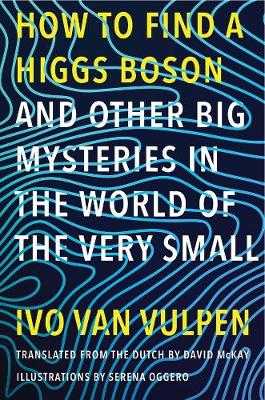Reviewed by Inkslinger on
ARC provided by NetGalley and Yale University Press. All opinions are mine and freely given.
Blog | Instagram | Twitter | Facebook
02-21: 'How to Find a Higgs Boson and Other Big Mysteries in the World of Very Small' by CERN particle physicist, Ivo Van Vulpen, is a surprisingly fun romp through some of the most complex discoveries in the history of the field.
The various discoveries and theories are told in layman's terms, anecdotes, and analogies even the most novice reader could enjoy. Initially, I had found the text to be overly simplified and a little repetitive, but as I read on.. I realized the author was setting the tone. He intended to get into some relatively heavy topics (no pun intended), even leading up to what he referred to as "one of the most abstract new concepts in physics," and wanted anyone picking the book up to be able to make it through to the end with him.. with a new understanding of the ideas and experiences he planned to share.
There are a few things especially, that I think the average reader will get a kick out of.. like the way the author shares the practical applications of many of the discoveries that have been made throughout the years. Though his analogies, he explains things such as how energy is produced in power plants.. also how electric engines like the Tesla uses (while better than fossil fuel engines), wind turbines, etc.. are not as "squeaky clean" as we think they are because they still have to get that power from traditional sources.
He goes in depth about the presence of particle accelerators and other quantum mechanics developments in our daily lives, via PET scanners, X-Ray technology, old televisions, computer monitors, and more. He even breaks down how they work, as well as the process of creating, destroying, and transforming particles entirely.. turning them into new.. and in some cases, undiscovered particles like his team did the Higgs Boson back in 2012.
"For example, an MRI scan of the knee of a particle physicist who has always been an avid amateur footballer may show that his cartilage is worn and that he should spend his time writing books instead of dreaming of a future on the FC Barcelona first team."
What I found fun, in addition to his sense of humor, were the analogies he sometimes chose to give the reader a better understanding of the scope of a the subject. Like the true physical size of both the series of particle detectors (one of which is a camera the size of the White House in Washington, D.C.) and the Large Hadron Collider, what it's like maneuvering those protons through it, what the equivalent force of that mass in real world terms, and additionally the ways scientists are now trying to capture evidence of dark matter through labs in underground mines and caves.. designed to avoid cosmic ray interference and hopefully get a glimpse of what they seek.
If you have even a remote interest in the field of particle physics or quantum mechanics, whether you're a novice or you consider yourself reasonably well read, I think you'll find something enjoyable about this book. I know I did.
-------------------------
02-20: For the record, I spoke far too soon. I see what he's doing. This is why he's the brilliant physicist. lol
02-17: I started this and a fictional title at the same time. Normally the two go pretty well together for me, but so far.. this is a bit of an elementary approach to the topic. That's not bad of course.. for someone who's a complete novice to it.. but it hasn't presented anything particularly eye-opening yet.. even in theory. We shall see..
Reading updates
- Started reading
- 21 February, 2020: Finished reading
- 21 February, 2020: Reviewed
